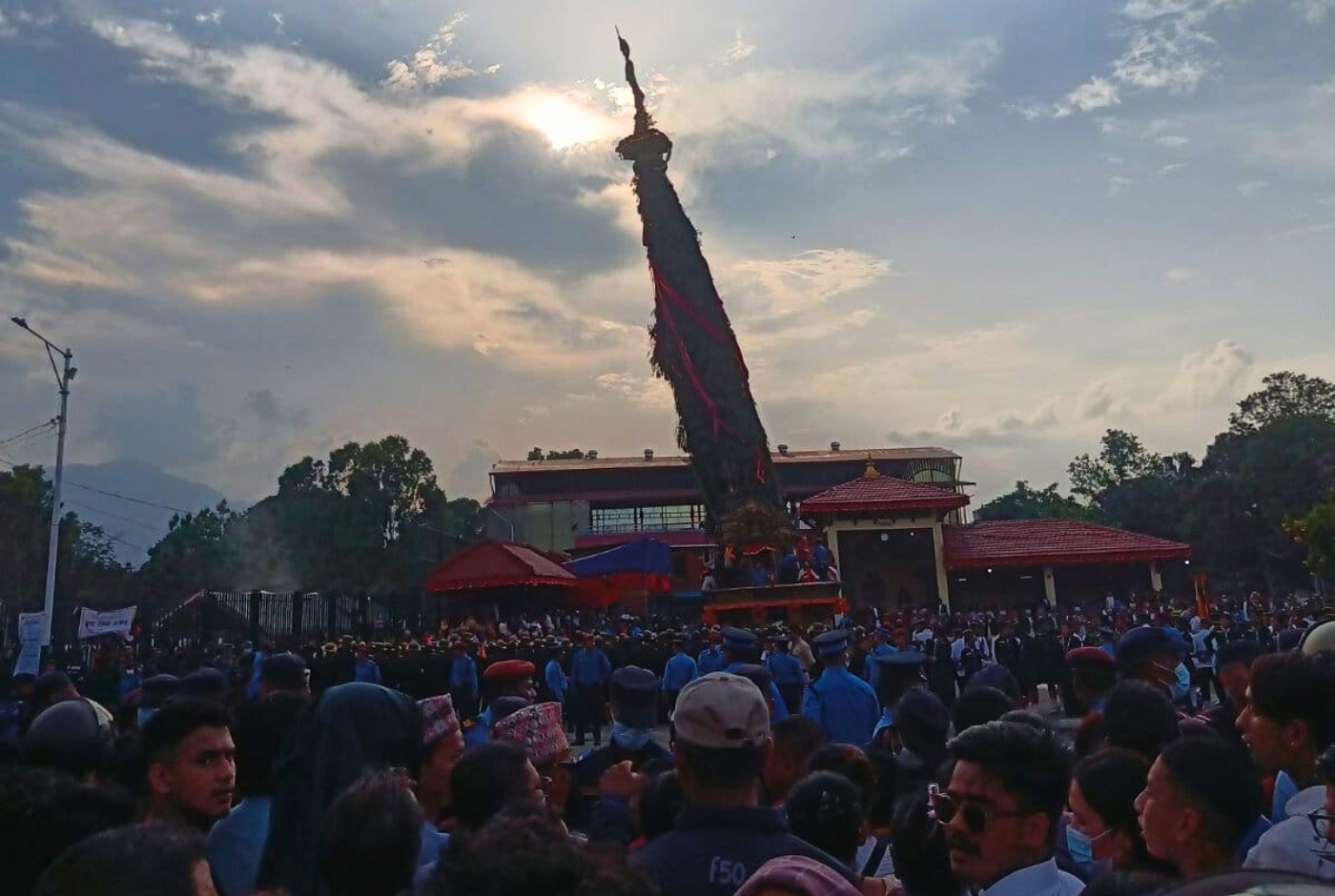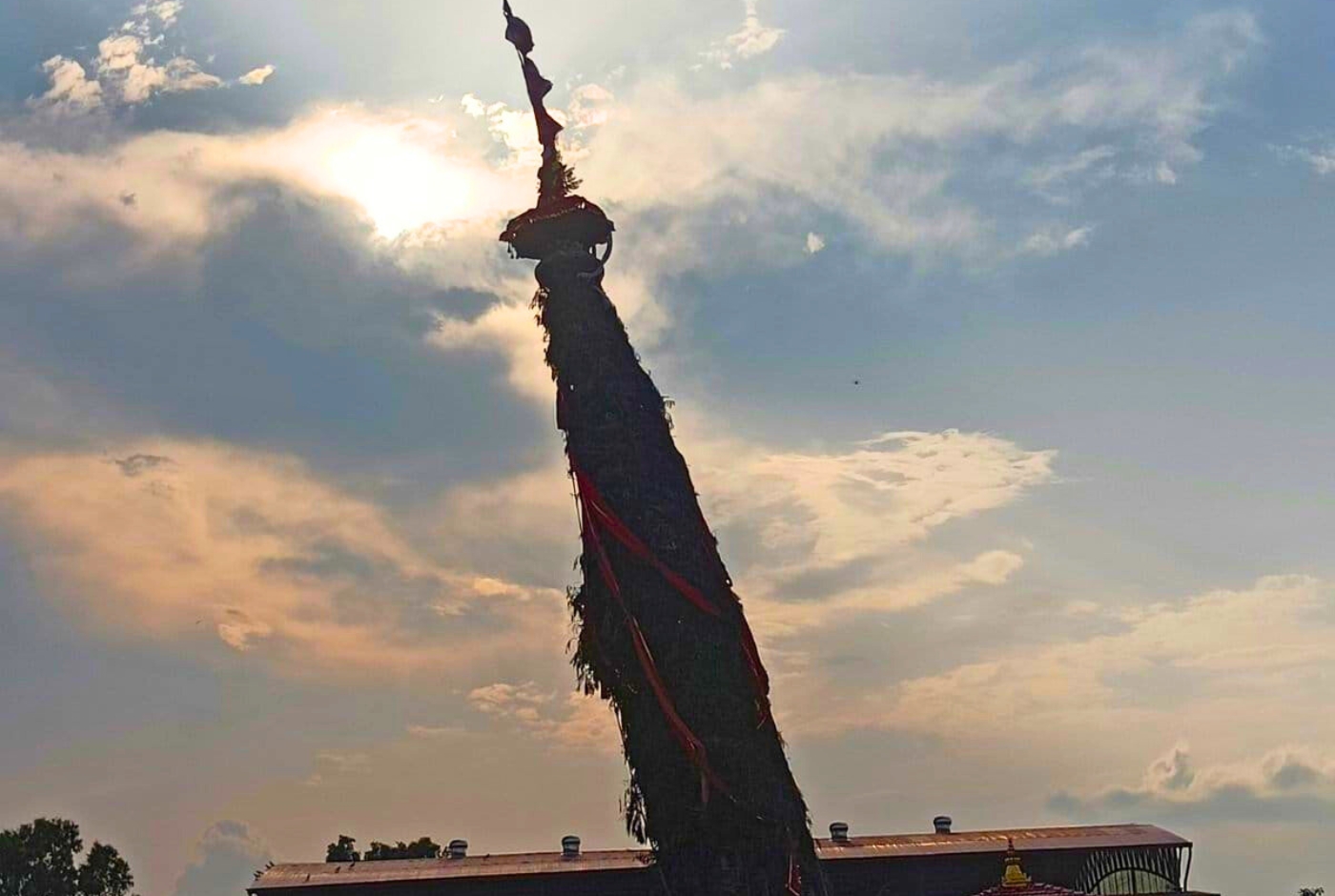Bhoto Jatra is a captivating festival held annually in the Kathmandu Valley, specifically in Lalitpur, Nepal. The event is the culmination of the Rato Machindranath Jatra, a significant chariot festival that honors Rato Machindranath, the revered deity of rain and harvest.
A Festival Steeped in Legend and Mystery
The highlight of Bhoto Jatra is the public display of a sacred, jewel-studded vest, known as the bhoto. According to legend, this vest was given to a farmer by the serpent king Karkotaka as a reward for curing his wife's eye ailment. The story takes a dramatic turn when the vest is stolen by a ghost, leading to a dispute that was ultimately unresolved. To this day, the vest is displayed at the festival, awaiting someone to come forward with proof of ownership.

Cultural Significance and Community Unity
Bhoto Jatra is more than just a religious event; it is a vibrant cultural celebration that embodies the unity and rich traditions of the Kathmandu Valley. The festival brings together people from diverse backgrounds, reflecting the harmonious blend of Hindu and Buddhist practices in the region. The chariot procession, which involves pulling a towering chariot through the streets, is a community effort, showcasing the collective spirit of the local people.
Festival Highlights
During Bhoto Jatra, the bhoto is displayed from a high wooden platform at Jawalakhel, Lalitpur. The event attracts a large crowd, including dignitaries such as the President of Nepal and other government officials. The presence of the living goddess Kumari, who bestows blessings upon the attendees, adds a sacred dimension to the celebration. The ritual of showing the bhoto to the public is accompanied by traditional music, hymns, and vibrant cultural performances, making it a spectacle not to be missed.
Why Bhoto Jatra Stands Out
Unlike other festivals, Bhoto Jatra uniquely intertwines mythology with real-world traditions, maintaining a continuous narrative that has been passed down through generations. The festival is not just a display of cultural heritage but also a live reminder of the values of justice and truth, as the community eagerly awaits the day when the vest's rightful owner will come forward.

Bhoto Jatra 2082 date | Vest Show 2025
The exact date for Bhoto Jatra (Vest Show) in the Nepali year 2082 B.S. and English calendar 2025 is 01 June, Sunday (Jestha 18, Sunday 2082). Traditionally, Bhoto Jatra is celebrated on the fourth day after the chariot of Rato Machhindranath arrives at Jawalakhel, Lalitpur. This event typically occurs in late May or early June, depending on the lunar calendar and astrological consultations. The precise date is determined annually by astrologers and local authorities.
Bhoto Jatra in 2025 is celebrated in Kathmandu Valley, specifically in Patan, during the months of May – June. This festival marks the end of the Rato Machhindranath Jatra, a month-long chariot procession. It's a public holiday in the Kathmandu Valley, attracting people from across the valley to participate.
Bhoto Jatra 2024
Bhoto Jatra in 2024, the concluding event of the Rato Machindranath Jatra, took place on August 4, 2024. This annual festival in Kathmandu Valley is the climax of the chariot festival, where the jewel-studded vest (bhoto) is displayed. The bhoto is believed to be from Nagraj, the serpent king, and is a significant cultural and religious ritual.
Experience Bhoto Jatra with Nepal Hiking Team
For those interested in experiencing the authentic cultural essence of Nepal, Nepal Hiking Team offers a unique opportunity to witness Bhoto Jatra up close. Our guided tours provide insightful context and allow you to immerse yourself in the local traditions, ensuring a memorable and enriching experience. Join us to explore the vibrant culture of Kathmandu Valley and be a part of this extraordinary festival.



Post a Comment